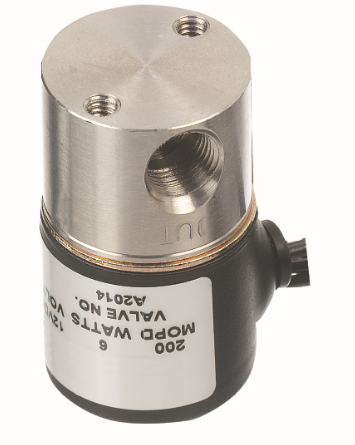MOPD stands for Maximum Operating Pressure Differential. Which means it is the allowable pressure difference between the inlet and outlet of the valve. When selecting a solenoid valve one of the first specifications to consider is MOPD. MOPD will help drive the other specifications as well. It is correlated to orifice size, flow rate, and overall size of the valve. Typically, the higher the MOPD, the smaller the orifice. The reason this is true, is because of force. Force is equal to the pressure times the surface area. So, a larger orifice means more surface area that the valve has to open against, which then limits the pressure variable. Flow rate of the fluid is affected by the orifice size as well. You may have large lines coming into the valve, but it all depends on the smallest restriction point to dictate the flow rate. And as you increase the orifice size, the overall footprint of the valve will increase to accommodate the internal valve passageways.
Another way to understand MOPD is to look at an example. When looking at Gems A Series solenoid valve, specifically one with prefix A2017, we see that it is rated to 50 PSI MOPD.

Let’s look at a couple examples that both would work with the A2017 valve rated at 50 PSI MOPD.
First Example:
- Inlet Pressure – 35 PSI
- Outlet Pressure – 0 PSI
- MOPD = 35 – 0 = 35 PSI
Second Example:
- Inlet Pressure – 100 PSI
- Outlet Pressure – 65 PSI
- MOPD = 100 – 65 = 35 PSI
Here’s an example that would not work with the 50 PSI MOPD.
- Inlet Pressure – 75 PSI
- Outlet Pressure – 10 PSI
- MOPD = 75 – 10 = 65 PSI
Since 65 PSI is greater than 50 PSI, A2017 valve will not work for that application, and you’d have to select the next valve up, A2016.
 SEARCH OUR RESOURCE CENTER
SEARCH OUR RESOURCE CENTER

